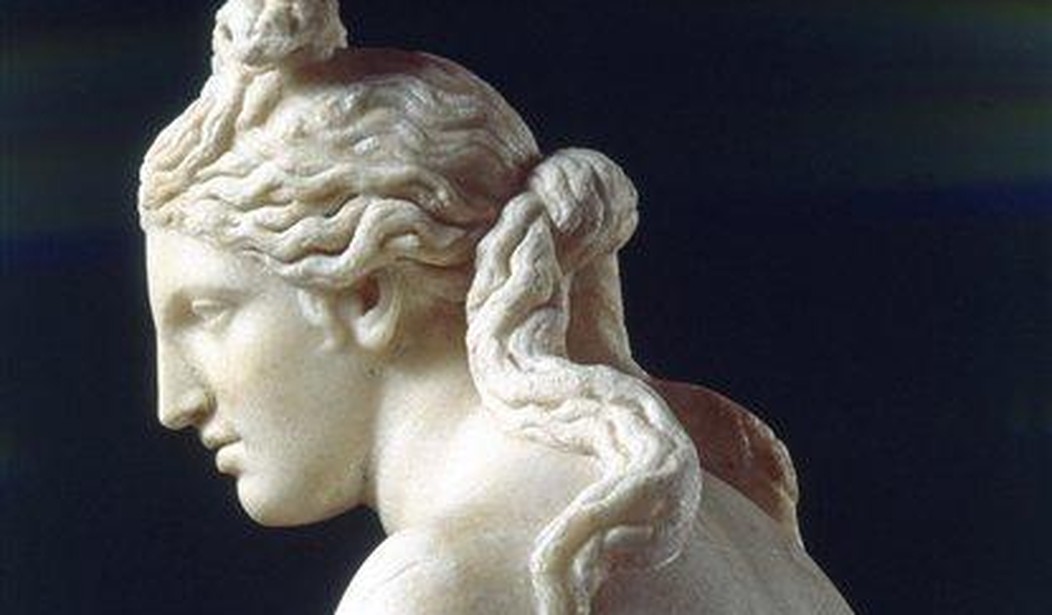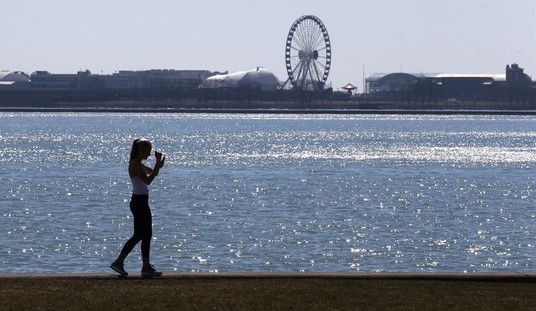At Cambridge University, they’re trying to explain why statues from an ancient era are white.
Were there no nonwhites in Old Testament times? Where are the monuments to differently-pigmented populations?
Aren’t statues always the color of the people they represent?
All the images, it seems, are Roman and Greek.
The school wants to make sure diversity isn’t downplayed.
As stated by the UK Express, it’s part of Cambridge’s “new anti-racism strategy.”
The plaster casts on display are courtesy of the institution’s Museum of Classical Archaeology. And where the Caucasian character of casts are concerned, the Classics Faculty has said it will “turn the problem into an opportunity.”
From the Express:
It will do this by looking at the ways in which color has been lost and can be restored, and to the “role of classical sculpture in the history of racism.”
New information panels will accompany the statues later this year and will center around “whiteness.”
Last summer, the outlet says, the Chair of the Classics Faculty Board received an open letter.
The missive demanded a “public acknowledgement of the problems of racism within Classics and the need for active anti-racist work within our discipline.”
Staffers, alumni, and dozens of students had signed.
Another recognition required: “an acknowledgement of the existence of systemic racism within Classics.”
In response, Cambridge released a statement and action plan.
As part, signs will be made to explain the racial wrong.
According to the official reply, “Students (additionally) report that difficult material is not always taught with sufficient sensitivity.”
So, it seems, they’ll soon be served some.
Lecturers will be encouraged to include “content warnings.”
Classics tutors will also receive training on how to discuss sensitive topics, while a review will be launched into all language used in course titles and materials.
As for new courses, the school ensures “language employed will be subject to scrutiny.”
All new and existing courses will be reviewed to ensure there is sufficient “diversity” on reading lists and bibliographies.
Wanting to discover historical “diversity” isn’t so new.
As I covered last month, in order to incorporate Pride into its presentation, Colonial Williamsburg has begun to research the homosexuality and transgenderism of early America.
It’s found them alive and well in the 18th century.
Per a member of Colonial Williamsburg Foundation’s new Gender and Sexuality Diversity Committee, an old court filing indicates people were perfectly progressive.
From The Virginia Gazette:
The document told of an affluent landowning Virginian woman. On her first attempt, she filed a marriage license to be wed to a woman who worked at her post office. It was denied, citing marriages were solely between a man and a woman.
The lady reportedly returned, dressed as a man.
Therefore, she was able to marry a woman.
For [committee member Ren Tolson] “it is a glimpse into how Americans viewed gender and sexuality in the 17th and 18th centuries. And, [he] said, through the research conducted at Colonial Williamsburg, they are piecing together a more complete history of LGBTQ people in colonial times.”
Such discoveries will soon be implemented into Williamsburg’s reenactments.
Back to Cambridge, everyone isn’t thrilled with the soon-to-be white waxing.
One teacher told The Telegraph, “You might just about understand this coming from a student, but the idea that this has been approved by the Faculty is as terrifying as it is comical.”
“It is so easy to laugh at this but in laughing, it is easy to overlook how extraordinary it is that one of the finest humanities departments in the Western world is putting this stuff out with an official institutional stamp.”
The museum currently possesses about 600 such statues.
And in case you were wondering, “What are plaster casts, and why are they white?” the Daily Mail lends a lesson:
Plaster casts are a copy of another three dimensional form using plaster.
In sculpting, they are often used to create a draft model that can be used when making a stone item.
One of the most popular types of plaster — used since ancient times — is plaster of paris — so called because of its preparation from the abundant gypsum found near Paris.
For plaster of paris, gypsum — a white rock — is heated and turned into a fine white powder and mixed with water.
This is what gives many plaster casts their natural white color. Lime plaster also similarly gives a white color, cement, grey, and clay a sandy brown.
Powder color can be added to plaster mixes to change the color and casts can be painted once dry.
But, since many plaster casts were used as models, rather than finished pieces, they were often left in their natural color.
Also perhaps valuable in the address of Cambridge’s catastrophe: Statues aren’t real people.
No one’s actually that pasty:
'Cambridge University’s archaeology museum has decided to put up signs explaining the “whiteness” of its plaster casts collections. This is to avoid giving the “misleading impression” that Greek and Roman society suffered from an “absence of diversity”.'https://t.co/twCCLotIpT
— trevorw1953 (@trevorw1953) August 24, 2021
Beyond those bits of information, maybe by explaining to onlookers that a statue of an individual doesn’t represent every person who lived everywhere on Earth at the time, racism will be solved.
We can only hope.
And if not, of course, a statue can always come down.
If there’s one thing the last year and a half have taught us, it’s that removal is always an option.
-ALEX
See more pieces from me:
Down With Capitalism: Professor Pummels Oppression by Shafting the Shift Key
Google Trains Employees on What Leads to ‘Genocide’: Trump, Ben Shapiro and ‘All Lives Matter’
Find all my RedState work here.
Thank you for reading! Please sound off in the Comments section below.













Join the conversation as a VIP Member